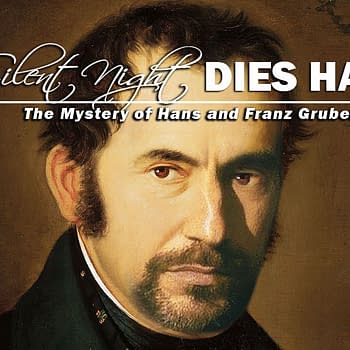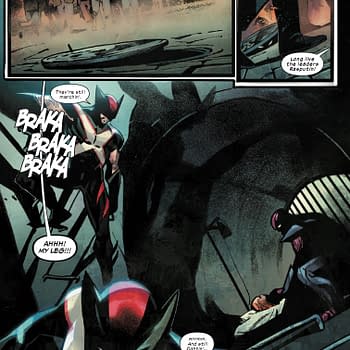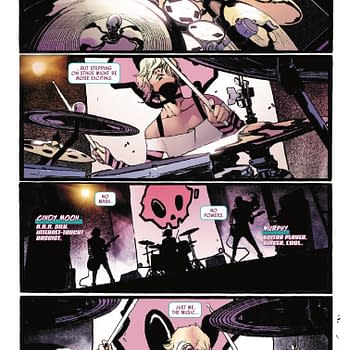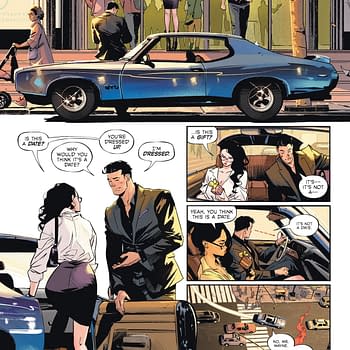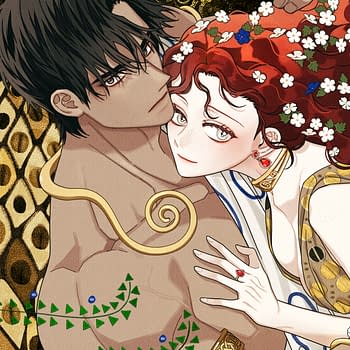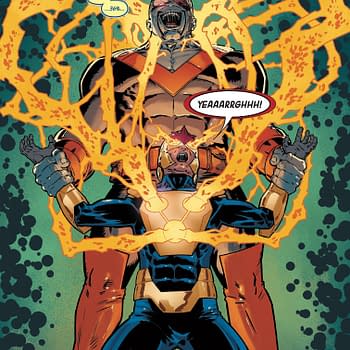Posted in: Comics, Recent Updates | Tagged: Comics, heritage auctions, stan lee, vintage comics
Building An Empire: From Flea Market Dealer To Helping Sell A Million Dollar Comic – Four Decades Of Empire Comics

Longtime BC readers will know that I'm a dedicated comics auction nerd. And it's an interesting time to be one of those. Case in point at the moment is Heritage's current Signature auction, which contains the world's best collection of Silver Age Marvel comics, and an astounding collection of original art from owner Marty Shamus — headlined by Todd McFarlane's Spider-Man #1 cover, with informed original art collectors now openly talking about the idea that this cover alone may very possibly pass the $500,000 mark.
So, when I got an email a couple weeks back regarding The Empire Comics Collection, a noteworthy group of vintage comics — which is also being sold through Heritage beginning with this auction — I was definitely up for taking a look behind the scenes. What I found was the story of a retailer who has been selling comic books for longer than almost any other retailer in the country, who started out in the flea markets and conventions of early 1970s NYC, and who has ultimately helped sell a million dollar comic — and currently runs two successful locations in Rochester, NY today. Here's my conversation with Empire Comics' Anthony Furfferi:
Your brother, James Furfferi, started Empire Comics in 1972, which makes Empire one of the longest existing sellers of comics around. James was one of the pioneers of the business, particularly in the NY area, and I understand he passed away at age 61 earlier this year. Why don't you tell us a little bit about those early days before Empire's first store. You and James were setting up at flea markets and the like? Doing mail order and setting up at conventions perhaps?
Jim did flea markets with his then partner which we later bought out. We were getting books then from Phil Seuling and the like in the era. Rapid City was our big purchase of about 20,000 or more comics, unsorted excess stock. That stock was used to sell as back issues, bagged and boarded. Jim and a crew mainly did the shows in NY City that Phil put on. Those were the days… movie stars, musicians and the like came to those "happening events". Crowds were huge… and it was exhausting loading, unloading and prepping for the set up once we got to the shows. Many other conventions were along the way as well. Ohio, Canada (those borders were tough).
If you look in some of those '70s Marvels you'll still see our ads selling bags. (Look for the 2 arrows in the box).

As kids we couldn't afford comics and toys but loved them. And it was a cool idea, him and his ex-partner had that seemed to have caught on. This was all before cell phones and the current media available to people now. We were able to gather a strong following for new books, toys and trades like How To Draw Comics the Marvel Way. And a few Amazing Spider-Man live appearances at the stores didn't hurt either. We got Jonathan Frakes as one of the actors in the suit. He had the Spidey poses down great.
Waitaminute. You had Jonathan Frakes in Spider-Man costume before he was on Star Trek TNG?
Here's how that went. We had to order thousands of dollars worth of books from either Random House or Ballentine. Bring on the Bad Guys, How To Draw Comics the Marvel Way and the books Marvel was publishing at the time through those publishers. And we had to pay for the Spider-Man appearance, etc. Well, there was a Merchant Marine strike going on in NYC, and those books could not leave the dock until that was settled. The bills kept coming from the publishers. But, we were not assured Spider-Man was going to show, and if so, would we have the books? So, a spat started.
Next think we know, cases of trades were on their way. We had lines around the building of little kids to see Spider-Man. Well, one kid customer (now in his 40's said to me one day.) Do you remember who was in the costume, and I said, not really who was it?…. He said Jonathan Frakes. So I asked him. how he remembered that and he said because the store had one bathroom and Spider-Man went in and Frakes came out.
I know a customer has a picture of himself at the event and the button every kid got and flyer from us. Fun time. Frakes in costume.
Empire opened its first store in 1976 and become one of the country's early direct-market retailers, getting comics from now-legendary distributor Phil Seuling. Let's talk about what the business was like in those days. How many copies of a top-selling title would you order in that era? What percentage of your business was new comics vs back issues?
Titles like Amazing Spider-Man, Uncanny X Men, DC's line of war titles, and super-hero titles were the most popular at the time. As we carried more titles customers requested, the sales expanded. A paper grocery bag would hold $20.00 worth of new comics. A bargain to customers. 40% sales were new comics. But, we sold bags like crazy shipping them every day all across the USA.
The first store was 400 sq. ft. when about 10 titles a week came in. Some were unannounced reprints (those Sgt. Furies).

That was a great period for us as more titles came out, and the art and writing got better. Customers just added them onto their list. Many customers drove in from 20-30 miles away at the time from small towns as the word grew and back issue sales were great. Watching those sales soar was great as Barry Smith, Neal Adams, Steranko and Steve Skeates [were doing work in comics] to name a few. Denny O'Neil's books were on target for good sales and X-Men couldn't be beat, just open the case. Then they're gone.
Even the Marvel, DC Treasuries had an audience back then and there were some great posters out too. Frazetta posters bought at the conventions and the like. Howard the Duck sold cases of comics, just because it was a new concept and people liked the whackiness involved in it. Silver Age was selling pretty hot, mainly the Marvels that Jim would buy at the shows and bring back for resale.
It seemed like we always came back with more than we left with… because we bought more at the shows. Fun time.
Let's jump ahead now to the Pinnacle Hill collection — a collection of many high grade golden age comics which contained the highest CGC-graded copy of Detective Comics #27. I'm pretty well-acquainted with the Heritage sale and its impact on the marketplace, but I'd love to get some behind-the-scenes info on it from your perspective.
Those books were purchased over decades by one of our customers who felt it was time to sell. He'd been coming to us for 25 years or so. Jim and (unnamed) had great times just talking about comics when the gentleman decided he should start thinking about selling some. He had some real nice books that he would upgrade in his youth at shows, when fewer people were going. That allowed him the chance to get a nice collection established in the 40 years or more that he collected and traveled to conventions to find them.
In stepped Heritage Auctions and we partnered up with them to make the purchase. Since then we've had a great relationship with Heritage. (Keep your eyes on what's coming up at San Diego and the year ahead.) We're doing some inventory now. Wow…

There are some obvious advantages here — a company like Heritage has a very large customer base and they do a great job marketing the books. But I'd like to get your first person perspective on the trend as someone who's been in the business a long time, as to why the vintage business is trending towards a small number of major auction houses offering the best vintage material.
I think Heritage's reputation can speak for itself. They really do a good job. Lon Allen has been very good to us in terms of patience and understanding. I'm sure some of the other Auction Houses do a great job too. It's just that Heritage is working hard for me at this point so why change winning horses in a race?
I believe it's a demographics issue as well. Many retailers my age or so are realizing now may be the time to sell off as the digital age comes upon us, and there are only so many buyers with that kind of money and interests.
On February 25, 2010 the Pinnacle Hill Detective Comics #27 CGC 8.0 sold for $1,075,500.00, becoming the second comic to break the million-dollar barrier. What was your reaction? How do you think this sale has helped to change the vintage comics market since then?
I think it legitimized the market as good investment for high end items and it sure was impressive seeing it in Times Square on their neons….
The live auction in case your missed it was very exciting. And I hope it brought out some customers to the stores as well.
Tell me a little bit about the background of the Empire Comics collection, part of which is now up for auction at Heritage. There's a lot of books that jump out at me from this collection — the All-Star Comics #8 CGC 8.0, the Captain America Comics #3 CGC 9.0, the Batman #11 CGC 9.4 (!!!) and on and on. Are there any particularly memorable behind-the-scenes tales of acquiring some of these great books?

Golden Age, still Silver Age to come in likely high grades, pulps, some artwork, Maxfield Parrish prints possibly. Baseball cards, etc. Nothing rare in the BB card area. I'm not sure they do toys but some cork guns,Pulps, Limited ed. hardcovers by R.E. Howard unopened. Just more books than we thought. Many high grade 70-80's comics.
The hobby was Jim's and buying the books were his thrill. He'd show them to me but over the decades there just became so many good books and little time to read them. But man we made sure we filled up States with books we shipped to customers. We met some fantastic customers, had a lot fun, built our own shelving and learned a lot along the way. Great times, with great customers who still come to us 35 years later or so. We thank them all and apologize for those we missed.
Teaching some of our past employees was our passion. They learned salesmanship, courtesy and now how to open their own store with today's opportunities. We have our rep from Diamond Comics, Nance Rhomer who worked at Comics Unlimited, (Walter Wang and Ron Forman), two more great guys. Nance and I can go back some 25 years or so. Same for Capitol… Milt and the crew were great to us. We thank them all.
I'd like to Thank Lon at Heritage for being patient with this transition…. it's a bit bigger than they expected too.
So was doing this for 41 years, it's been worth it… All the way. Would I do it again? Only if I could. We're still open, selling online for 14 years on ebay and a few other sites as well. And the stores get new books and merchandise from Diamond Comics weekly.
The first group from the Empire Comics Collection is up for bid now in Heritage's July Signature Auction.
- James Furfferi and Stan Lee
















